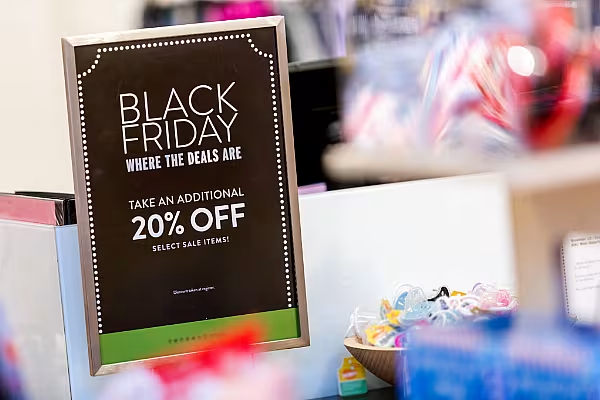As ‘Black Friday’ kicks off in earnest at retailers around Europe, ESM gets the perspective from a number of leading industry experts about the growing significance of this annual event, and how the make the most of this optimum shopping opportunity.
Tim Barrett, Euromonitor International
“In an age where everyone is too busy and all our actions are data points to learn from, retailers that release holiday sales information earlier than their competitors increase their exposure to customers and in doing so, gain more time to gather information on how to best prepare for the coming months. Generating demand for the ‘hottest’ toys of the season is both an art and a science, and by releasing this information to the public sooner, retailers and their supplier partners get more data upon which to limit customer frustration from crucial out-of-stocks. By extending timelines, shoppers have more time to shop while helpfully narrowing the decisions needed to enact a successful merchandising strategy for retailers.
“It appears as though Black Friday shopping will continued to extend itself as shoppers opt for increased convenience. Not only do they want to order when they want, but also where they want. The continued draw of e-commerce along with anticipated delivery times will make retailers with larger sales periods more enticing.”
Eleanor Parr, GlobalData
“Strong inflation in the market means retailers will struggle to offer the low prices seen in 2016. This year retailers’ margins have been hit as suppliers have been forced to raise prices due to increased production costs following the devaluation of the pound. As a result, retailers have been forced to increase prices in an attempt to mitigate margin loss. This has mainly affected the electricals sector but those who trade in fashion and homewares have also been impacted.
“Increased cost prices will mean retailers are unable to offer the level of discounts advertised in 2016, meaning demand may waver as consumers feel less inclined to make bargain purchases on impulse. Therefore retailers will need to be creative with how they advertise Black Friday promotions this year, for example promoting multi-buy offers or free gifts with purchases if they cannot afford to offer large discounts.”
Craig Summers, Manhattan Associates
“It is really important that retailers not only focus on the promotion aspect of Black Friday, but also ensure that the service they provide is consistent. The skill is balancing both aspects in order to make the sale and retain or gain a loyal customer. To do this, retailers can monitor the promotions and sales of products in real time and decide which products they want to offer with certain promotions.
“For example, they may choose to turn the promotion dial down by having a 15% discount and keeping their 24 hour delivery window for a product selling well, but turn the promotion dial up by offering a 30% discount and extending the delivery window to a maximum of 10 days for products that they know are not as popular. Retailers that can harness the data available to do this in real time will be able to better manage and take advantage of the possibilities of Black Friday.”
Thomas Spony, Europanel
“Unlike their US counterparts, UK retailers involved with Black Friday are exercising caution this year. The event has always fitted rather awkwardly into the UK retail calendar – without the American Thanksgiving association and accompanying time off work – and businesses will be wary of cannibalising pre-Christmas purchasing which would probably have happened without the incentive of heavy discounting. Many are simply using the event as a relatively small part of broader and more considered festive discounting strategies.
“Retailers in China and the US have managed to turn these sales into celebratory events in shopper calendars, without the negative connotations of tussles at stores, websites unable to handle the extra traffic and perceptions of poor value for money that have dogged the UK equivalent. Overseas events are also at the cutting edge of retail technology – over 90% of Singles Day transactions took place on mobile devices, as Maybelline customers tried on virtual lipstick, and denim pop-up stores offered virtual fitting rooms. ‘See it now, Buy it now’ was the retail industry motto for this year. Lacking this kind of enthusiasm or verve, the UK event feels half-hearted at best.”
Tom Downes, Quail Digital
“For the customer, Black Friday is all about speed. It is about finding the right products at the right price, making the purchase and moving on to the next store. And that creates a challenge for store staff – is the priority minimising the check-out queues or restocking shelves? Managing security or ensuring experts are on hand to answer customer questions?
“While staff can clearly handle many aspects of the day to day activity, when it gets tough – and it doesn’t get much tougher than Black Friday - prioritisation must be the role of the store manager. This is not a day for the store manager to be locked away in a back office. A store manager needs to be on hand, actively checking check-out queues, spotting problems with bag handling and or issues with security tags. Managers need to be on the shop floor – and they need to be in constant communication with staff.”
Thomas Burke, Ibec (Retail Ireland)
“While Black Friday and Cyber Monday sales are good news for shoppers they do present a challenge for Irish retailers. Total sales in December 2016 fell by 1.2 per cent when compared with the previous month. This fall in sales, in what should be the busiest month of the year for retailers, highlights that an increasing proportion of Irish consumers are now making a significant number of their Christmas purchases in November in order to take advantage of the deep discounts available in this promotional period. The question retailers are now asking is whether or not such shopping events are merely displacing consumer spend and reducing margins over the crucial Christmas shopping period.”
© 2017 European Supermarket Magazine – your source for the latest retail news. Article by Stephen Wynne-Jones. Click subscribe to sign up to ESM: The European Supermarket Magazine.














